When I first reviewed the Toyota Fortuner – way back in 2016 when it was launched here – I thought it was pretty good: a solid, if unspectacular, seven-seat 4WD. For a ute-based wagon it wasn’t a game-changer, but it was a decent effort.
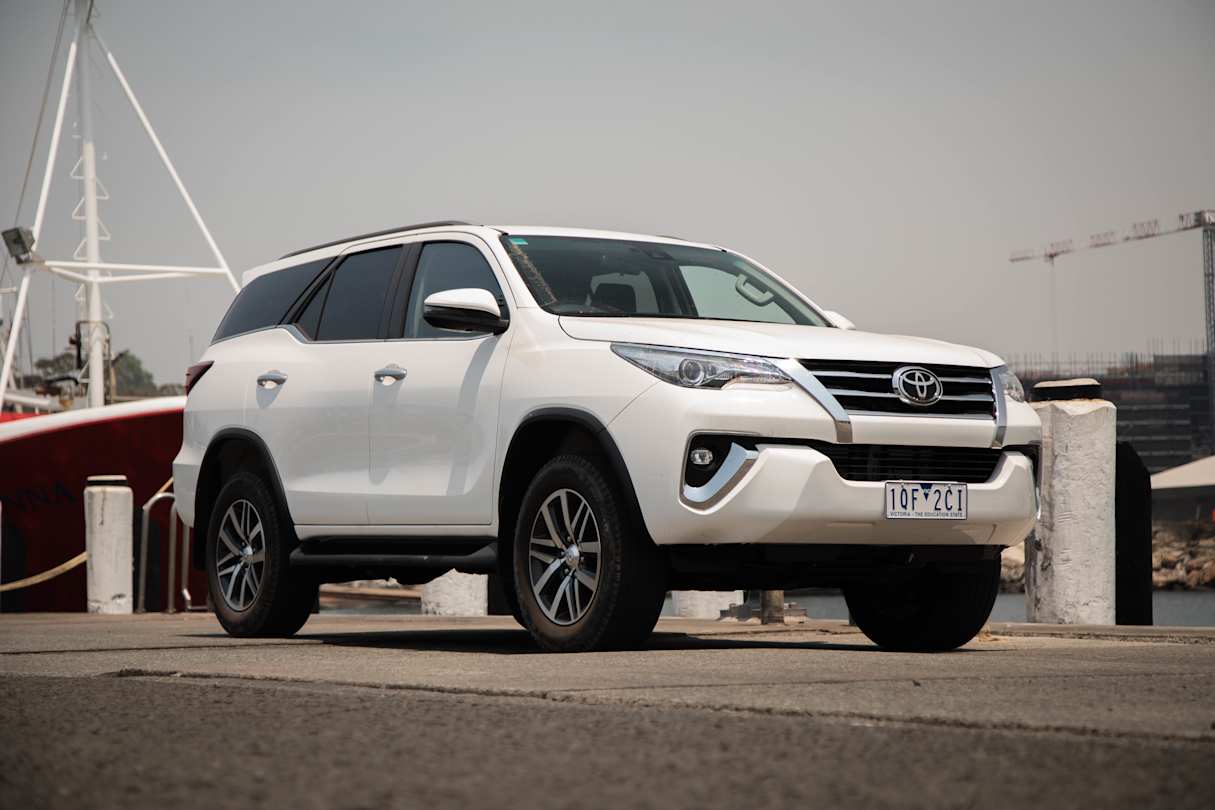
Since then, Toyota’s given the Fortuner a few slap-and-tickles along the way – including safety upgrades (with AEB) this year – and that’s all been an attempt to keep it relevant, but the Fortuner has never really sold as well as Toyota has hoped it would.
Now, three years down the track – which can be a lifetime in the automotive world – the big question is: Is the Fortuner worth buying? I drove the top-of-the-range Fortuner Crusade to find out. Read on.
Toyota Fortuner 2020: Crusade
| Engine Type | Diesel Turbo 4, 2.8L |
|---|---|
| Fuel Type | Diesel |
| Fuel Efficiency | 8.6L/100km (combined) |
| Seating | 7 |
| Price From | $46,310 - $53,790 |
| Safety Rating |
|
Does it represent good value for the price? What features does it come with?
The Crusade has a 2.8-litre four-cylinder turbo-diesel engine (130kW@3400rpm/450Nm@1600rpm to 2400rpm), a six-speed automatic transmission, part-time four-wheel drive and a rear diff lock. Price as tested is $58,290 (plus on-road costs).

It has climate-control airconditioning, 11-speaker JBL audio system, a 220V accessory connector, 18-inch alloys, side-steps, roof rails, LED daytime running lights, and its exterior colour is glacier white, a standard colour.

The front seats are heated and eight-way power adjustable.
It has a few fancy touches like – such as chrome all over the place, paddle shifters, and a power tailgate – but beyond those it’s a bit light-on in terms of premium features for something at this price-point.
Is there anything interesting about its design?
The Fortuner is starting to look a bit stale and its interior doesn’t set pulses racing either.
What are the key stats for the engine and transmission?
Its 2.8-litre four-cylinder turbo-diesel engine and six-speed auto generally work adequately together – a pairing that is more slow than smooth.

The 4WD system is reliably effective.
How practical is the space inside?
The Crusade is the Fortuner flagship so you’d expect the interior to have superb levels of fit and finish – well, it’s all a bit of a let-down.
There are soft-touch surfaces everywhere, the interior is leather-accented, there’s a woodgrain-look to the instrument panel highlights, and a bit of hand-stitching in the seats and door trims and around the interior – but as an ensemble it lacks a real premium feel.

The front seats are heated and the driver’s seat is power adjustable.
There’s a 7.0-inch touchscreen multimedia system – not really big enough or clear enough – and a 4.2-inch colour driver’s display.

The Fortuner does not have Apple Carplay or Android Auto.
There are storage spaces up front – including these pop-out cup-holders – and enough USB points to keep your phones charged.
The Fortuner’s seven seats are in a 2-3-2 configuration. The 60/40 split-fold second-row seat has a one-touch, tumble feature while the 50/50 third-row seats are stowable, sort of. (More about that two paragraphs below.)
Boot space is claimed to be 200 litres with the third-row seats in use. In the boot, you get a 12v socket and cargo hooks.
Stow away the third-row and cargo space increases to 716 litres but the seats chew up plenty of practical space because they poke out into the cargo space. Also, they do clip into place but the right-hand seat fell down during low-speed 4WDing through a very rutted section of bush track.
With the second-row folded forward and somewhat out of the way, there’s a claimed 1080 litres of cargo space.
As for the plight of passengers, the third row is pretty ordinary: the seats are flat and unsupportive – and, even for a vertically-challenged bloke such as myself, the space is on the wrong side of very squeezy.
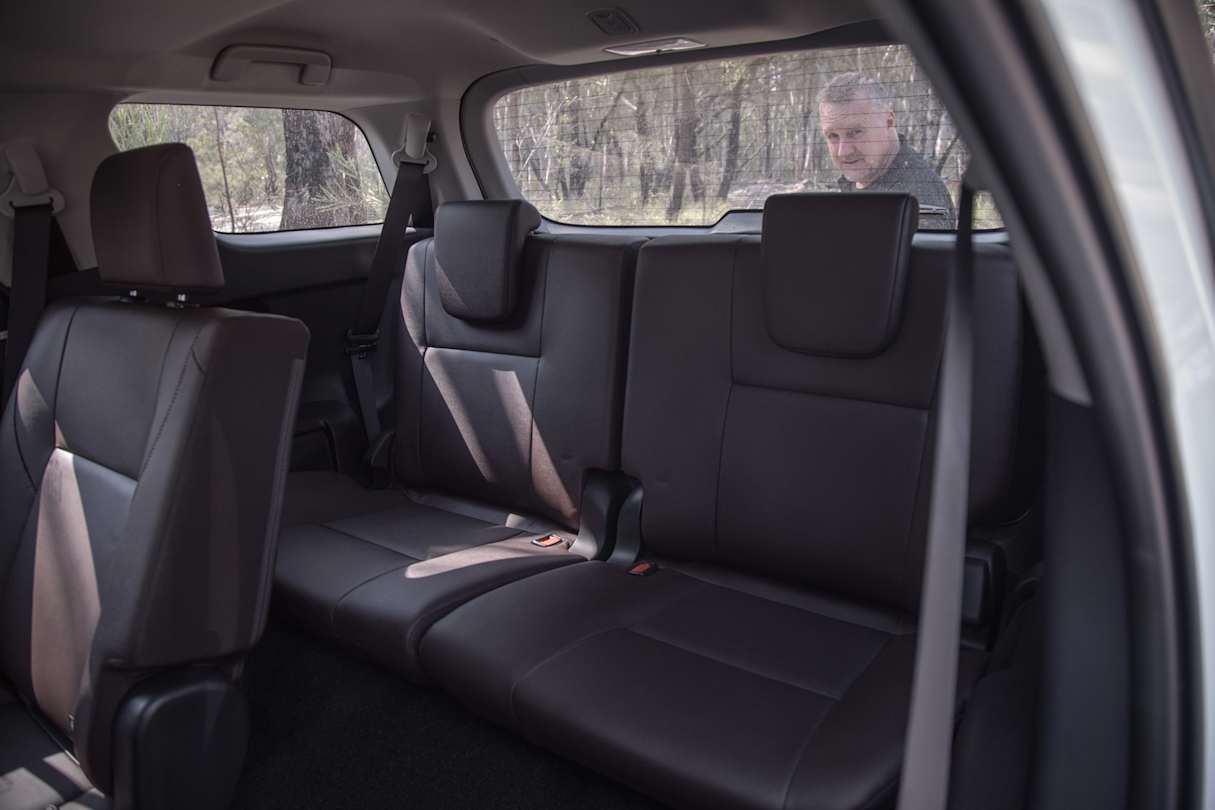
All three rows get aircon – there are roof-mounted vents – and there are a few handy storage spaces in the third row, but no cup-holders.
In the second row, comfort levels are a lot better – sitting behind my driving position, I had ample knee room, and head and shoulder room wasn’t to be sniffed at either.

The second row has two ISOFIX and three top tether anchors.
There are cup holders in this fold-down armrest as well as controls for the aircon above.
What's it like as a daily driver?
The Crusade is 4795mm long (with a 2750mm wheelbase), 1855mm wide, 1835mm high and has a listed kerb weight of 2135kg.
On-road, the Fortuner can be okay – for a ute-based wagon.

Driver position is high and there’s plenty of all-round visibility – although the A-pillars are quite bulky and there’s no seeing around the third-row when it’s folded up to the sides and blocking vision through the back.
It’s reasonably quiet – not fantastic though – because there’s some wind noise around the wing mirrors and engine noise is a constant soundtrack. And that engine noise gets pretty piercing when you’re giving it the boot.

Steering is not as dialled-in as you’d hope, with understeer and some ‘play’ in the wheel on centre, but it takes on a better, heavier feel at lower speeds, especially when 4WDing. The wheel itself is reach and rake adjustable though.
Acceleration is all-round a bit patchy with noticeable lag from a standing start and when it comes time to overtake.

The six-speed auto is generally on the money, although it can be a bit off-key, downshifting hard at times.
Ride is good, but not great, with its coil-spring suspension sorting everything evenly, except for more severe bumps when it feels like the bump stops cop a solid bashing.
You tend to feel every imperfection in the road through the tyres though – especially as the bitumen became coarser on coastal back roads. Adjusting pressures on the Michelin Latitude Tour HP (265/60 R18 110H) rubber – described as an “on road SUV tyre” – helped to slightly improve the situation.
What's it like for touring?
Before we get stuck into it, here are the Fortuner’s off-road measures: ground clearance (225mm), approach angle (30 degrees), departure angle (25 degrees), rampover angle (23.5 degrees), wading depth (700mm)
Off-road, it is very capable.
I took it through some rough terrain – rocky tracks, deep ruts and uphills and downhills – nothing extreme, but tough enough. The Fortuner is no hard-core rock-crawler, but for a suburban-focussed 4WD wagon it does well.

The switchable 4WD system has high (4H) and low range (4L). There’s plenty of low-end torque for smooth low-speed off-roading and the turbo-diesel engine just keeps the Fortuner moving, without fuss.
The mechanicals are all fine – its 4WD set-up is always on song – but it feels low slung and long but, having said that, we avoided ever grounding the Crusade’s underbody. You do, however, always have to drive to take into account the Fortuner’s inhibiting factors – its big side steps and low stance.

The Crusade’s traction control is effective at limiting wheelspin and helping to keep you trucking along – and if you need more traction you can always use the rear diff lock.
Besides, wheel travel is good enough to drop a tyre to the dirt, even through deeper ruts.
It has a 11.6m turning circle, so it’s not necessarily light on its feet in the bush, but it’s definitely manoeuvrable.

The Fortuner has a 750kg unbraked towing capacity and 2800kg braked towing capacity. Some of its rivals can legally tow 3100kg.
New Fortuners have a diesel particulate filter (DPF) Diesel Particulate Filter switch, so you can do a forced burn-off yourself to hopefully avoid any DPF issues. Don’t have any idea what I’m talking about? For more on Toyota’s DPF issues, read carsguide.com.au.
How much fuel does it consume?
Fuel consumption is a claimed 8.6L/100km on a combined cycle.
I recorded 9.3L/100km fill to fill after almost 300km of driving, including 15km of low-range 4WDing. The Fortuner has a 80-litre fuel tank.
Warranty & Safety Rating
What safety equipment is fitted? What safety rating?
All versions of the Fortuner have a maximum five-star ANCAP safety rating, based on the latest 2019 standards.
Safety gear now includes auto emergency braking with pedestrian and cyclist detection, seven airbags, those second-row ISOFIX child-restraint anchorage points, reversing camera and rear parking sensors (none in the front), Active Cruise Control, Lane Departure Alert, Road Sign Assist and more.
The Fortuner does not have blind-spot warning, rear-cross traffic alert, or front parking sensors.
What does it cost to own? What warranty is offered?
The Fortuner range has a five-year, unlimited kilometre warranty. Servicing intervals are six months/10,000km and cost $480 a year.
Verdict
The Toyota Fortuner Crusade is a solid off-road tourer – sufficient on-road, effective off-road and practical enough in day-to-day terms.
But it’s nothing special – it really is starting to look, feel and drive a bit stale – and it needs more driver-assist aids and more standard features to bring it up to date.
Beyond its Toyota badge, there’s little to recommend the Fortuner Crusade over some of its cheaper, more comfortable and better-equipped seven-seat SUV rivals, such as the Ford Everest, Isuzu MU-X, Mitsubishi Pajero Sport and even budget buys like the SsangYong Rexton or LDV D90.
Pricing Guides



















































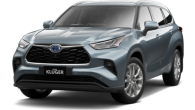



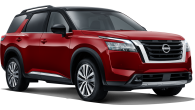








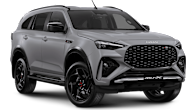



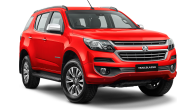


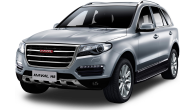




.png)

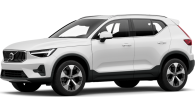




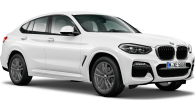

.png)


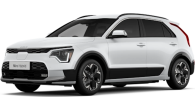
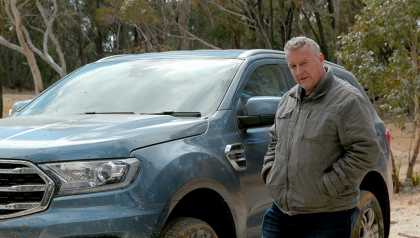

.jpg)



